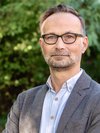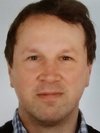Sektion 4.6: Geomorphologie
Opportunities
Welcome to the opportunities page of Section 4.6 Geomorphology at the GFZ. Here, we provide information and list contact details for internships, student projects, and job openings within our section.
Wir sind offen für Student:innen und Praktikant:innen, die interessiert sind an Erd- und Umweltwissenschaften, sowie geotechnischem Ingenieurwesen. Unsere Sektion arbeitet in den Wissenschaftsbereichen von Geomorphologie, Umweltseismologie, Geochemie und Naturgefahren. Deine Aktivitäten während einer Abschlussarbeit oder eines Praktikums könnten folgende Aufgaben umfassen:
- Arbeiten im Labor mit Fokus auf Biochemie, Sediment- und Wasseranalyse oder physikalische Prozesse,
- Analysen von seismischen, geochemischen oder Fernerkundungsdaten,
- Design und Bau von wissenschaftlicher Ausrüstung in unseren elektronischen und Baulaboratorien.
Die Praktikumsdauer in unserer Sektion beträgt üblicherweise zwischen zwei Wochen und sechs Monaten, bei Abschlussarbeiten typischerweise drei oder sechs Monate. Abhängig von Thema, Hintergrund und Dauer kann auch eine begrenzte, finanzielle Unterstützung in Frage kommen.
Wenn du interessiert an einem Praktikum oder einer Abschlussarbeit bei uns bist, kontaktiere bitte geomorphology-students@gfz-potsdam.de. Um einen passenden Themenbereich für dich zu finden wäre es hilfreich, wenn du in deine Anfrage eine kurze Beschreibung von deinem Hintergrund, deine Interessen bezüglich einer wissenschaftlichen Arbeitsgruppe, bzw. Projekten, in die du gern involviert wärst, und möglicherweise einen Lebenslauf, einfügen könntest. Bevor du uns kontaktierst können dir unsere aktuellen Forschungsthemen helfen, Bereiche zu wählen, die dich besonders interessieren.
Student Projects
We offer joint supervision of bachelor and master’s projects together with a professor at your university. You can look through our project and staff pages and approach a suitable scientist with your project idea. If you do not have a project idea, don’t worry! We have many and you can find some of them in the list below. For general inquiries, contact our senior scientists with a brief description of your background and interests, they can put you in touch with suitable scientists in the section:
- Taylor Schildgen: geomorphology & landscape evolution
- Dirk Sachse: biogeochemistry, carbon cycle & climate archives
- Jens Turowski: physical processes at the Earth’s surface & fluvial geomorphology
Potential Bachelor or Master’s Projects:
- How quickly do mountains change shape?
This project focuses on the long-term evolution of landscapes subject to strong gradients in rainfall. Theoretical and laboratory models have shown that strong rainfall on one side of a mountain range will cause it to shift its whole shape over time, leading to a lateral shift in the drainage divide toward the drier side. In this project, we will take advantage of a unique thermochronology dataset that suggests a lateral shift in the drainage divide over time of a range within the Central Andes. By combining landscape evolution modelling with the thermal model Pecube, we will quantify the rate at which the mountain has changed shape, and use newly obtained erosion-rate data from cosmogenic nuclides to test the impact of this shape-shifting on modern erosion patterns.
Contact: Taylor Schildgen - Stochastic modelling of valley evolution
We have recently developed models for the width of fluvial valleys. In the project, a stochastic model for the temporal evolution of valley width would be implemented and explored.
Contact: Jens Turowski - Fluvial bedrock erosion in the lab
Using specifically designed erosion mills, the experiments can be used to investigate sediment and rock property controls on fluvial impact erosion, and to calibrate the mills to natural rivers.
Contact: Jens Turowski - How quickly is in-stream wood destroyed by moving bedload particles?
This question will systematically investigated using laboratory experiments with our abrasion mills.
Contact: Jens Turowski - Do fungal mycelium networks make hillslopes more stable?
Fungi are everywhere in the soil, consisting of networks of strings called mycelium that can span over large areas. These strings need to break when a slope fails, and we want to quantify their breaking strength and effects on soil stability in laboratory experiments.
Contact: Jens Turowski - How does the terrestrial carbon cycle work?
In this project we plan to investigate how surface processes, like erosion and riverine transport, affect the amount and the composition of biospheric carbon (i.e. from soils and modern plants) during their transport from mountain slopes into the ocean. We work on several example river systems in the Himalayas and the Andes. See also project ROCcycle. This project is suited for students interested in geomorphology, sedimentology, organic geochemical analysis and carbon cycle studies.
contact: Dirk Sachse - How fast and why did climate change in the past?
In this project we use organic geochemical tools (biomarkers or organic compounds deposited in in lake sediments and their stable isotope ratios) as recorders climatic changes in the geological past. We reconstruct paleohydrologcial changes and identify drivers of past climate change. We particularly focus on the end of the last Glacial Period and the Holocene, see also project STEEPclim. This project is suited for students interested in organic geochemical analysis and paleoclimate questions.
contact: Dirk Sachse - How regional is ‚global‘ climate change?
In this project we use available high-resolution paleoclimate data (from biomarkers and other proxies) from several climate archives across spatial domains (like Europe) got understands spatial patters of climate change. This project is suitable for a student interested in data analysis, statistics, spatial data analysis and time series analysis and no lab work is required. See also some relevant questions in the STEEPclim project.
contact: Dirk Sachse
No current opportunities.












